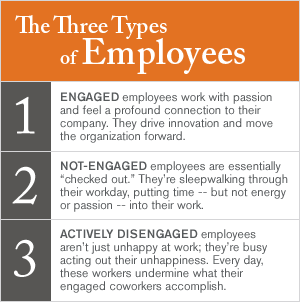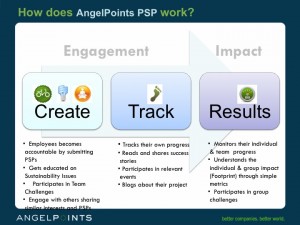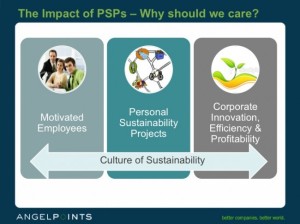Almost everything I’ve read or written about employee engagement to this point has referenced multiple surveys—and they all say pretty much the same thing. Most companies suffer from an engagement deficit, and it doesn’t take a genius to intuit that the current economic crisis is not helping matters.
But I find that the constant focus on the numbers actually detracts from the matter at hand. The statistics, after all, do not solve the engagement problem. They merely provide more information about an issue already known to exist at least to a certain degree.
Last night, I tested a number of surveys for a market research class I am taking. As the respondent, they seemed long and tedious. I spent more time than I care to admit trying to draw a meaningful distinction between a “4” and a “5” on the satisfaction scale.
But as the person who helped design the surveys, I understood why the questions were necessary. I knew why we were asking the questions and what we were trying to learn. Most importantly, I understood how we would use the results to inform our communications strategy.
Employee surveys are no different. They require substantial investments of time and money, and risk annoying the employees who are asked to take them. What is done with the results is critical and is the only justification for conducting the survey in the first place. So, I realized last night, it is absolutely crucial that companies take a strategic approach to conducting employee surveys.
I found a great article about this subject today, coincidentally. It focuses on a collaborative effort by Amway and Towers Perrin to incorporate business goals and strategy into the design and implementation of an employee survey. In doing so, the authors uncovered four guiding principles. In a nutshell, they are:
Integration: Questions should be designed to get at the heart of what matters most to the company. Results, therefore, become as valuable as key strategic and financial indicators.
Alignment: Surveys should be centralized (particularly across geographic regions) to ensure the focus remains on improving the culture of the organization as a whole. Consistency assures that results can be compared across regions later.
Discovery: Results should be presented in such a way that the organization’s leaders want to engage with the data and can collect insights that are relevant to key strategic initiatives.
Execution: Emphasis on organizational effectiveness, including survey roll-out and use of technology, is as important as design. Training at the local levels further supports a global leadership team and ensures uniformity and credibility across the board.
The results of this strategic approach were impressive. Not only did Amway achieve an extremely high response rate while reducing overhead, leaders were able to correlate employee feedback with business metrics. The ability to quantify corporate culture in terms of business performance was an extremely enviable outcome. Survey results also provided an opportunity to compare results across regions, thereby enabling leaders to leverage strengths across the organization and develop local solutions where necessary.
The article goes on to list seven also very useful steps for optimizing employee surveys (for strategic impact, of course).
Read: Jon Brickner and Joe Dettmann on Beyond Engagement: Using Surveys to Drive Strategy for Talent Management Magazine (11.09)
I’m not convinced that this process rests entirely with the HR function as the authors seem to suggest. Therefore, this article comes highly recommended from me, as an internal communicator.
 e to work, but
e to work, but  they do all of this not for tangible benefits, but because they are personally committed to the organization and its success.
they do all of this not for tangible benefits, but because they are personally committed to the organization and its success. requirements to do so.
requirements to do so. sustainability engagement among employees.
sustainability engagement among employees. But in the meantime, the AngelPoints PSP model (at left) shows that motivated employees can ultimately affect improved business performance and inspire a corporate culture of sustainability. In case you’re not convinced, this general progression is supported by research conducted by consulting powerhouses
But in the meantime, the AngelPoints PSP model (at left) shows that motivated employees can ultimately affect improved business performance and inspire a corporate culture of sustainability. In case you’re not convinced, this general progression is supported by research conducted by consulting powerhouses  different industries (obviously the carbon footprint of an oil company will be greater than that of a consulting firm). But Newsweek did its best to acknowledge efforts to improve environmental policies, performance, and reputation by assigning each company an industry-adjusted “Green Score.”
different industries (obviously the carbon footprint of an oil company will be greater than that of a consulting firm). But Newsweek did its best to acknowledge efforts to improve environmental policies, performance, and reputation by assigning each company an industry-adjusted “Green Score.”